Best Places to Visit in Washington

Searching for the best places to visit in Washington State? Well, you are in the right place! Whether you have time for just a day trip, a weekend or a week-long vacation, here are the most amazing places we found near Seattle and all across the Evergreen State.
After exploring Washington State time and again and from my recent four week road trip, here are the places in Washington I keep coming back to, and I hope you enjoy'll enjoy them too.
- Seattle
- -- Best WA Places to Visit Under 1 Hour from Seattle:
- Snohomish, Kirkland, Tacoma, Mukilteo
- -- Best Places to Visit in WA in 1 - 2 Hours from Seattle:
- Bellingham, Sequim, Ellensburg
- -- Best Places to Visit in WA in 2 - 3 Hours from Seattle
- Vancouver, WA , Port Angeles, Friday Harbor
- -- Best Places to Visit in WA in Over 3 Hours from Seattle:
- The REACH Museum in Richland, Walla Walla, Spokane
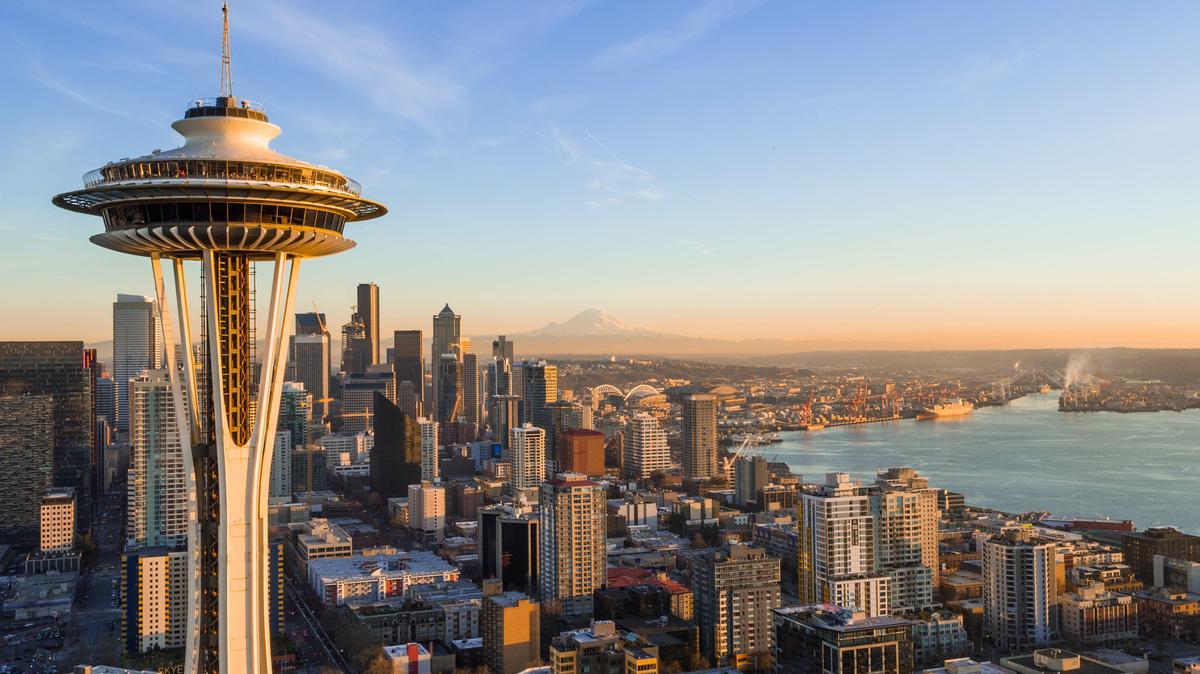
1. Things to Do in Seattle
No list of the best places to visit in Washington State would be complete without its largest city! We absolutely love Seattle, and have been many times. I love seeing the skyscrapers that rise over Elliott Bay, ferries going back and forth across the water, and snowcapped Mount Rainier in the distance. In addition, the choice of cultural attractions, restaurants and tours is amazing in Seattle!
Flying into Seattle-Tacoma International Airport (SEA), I stayed at Lotte Hotel Seattle before we moved here for three fun days, a hotel that won the AAA Four Diamond award so you can trust that it's a quality hotel!
We began at Nossa Familia Coffee's Seattle outpost, ordering a smooth Americano and a warm cheddar-chive biscuit. The coffee was rich and earthy, the biscuit savory and crumbly, and I lingered as long as I could.
Later, I wandered into the Center on Contemporary Art (CoCA) where I loved seeing the bold installations that filled the quiet rooms.
In addition, we sampled local foods at Pike Place Market, visited the Seattle Art Museum and the Museum of Pop Culture for culture and creativity, and walked along the Seattle Waterfront. Taking a ride to the top of the Space Needle was incredible, as was going on a ferry ride across Puget Sound.
Dinner at Toulouse Petit on our first night brought warmth and happy memories with my husband, along with a tasty bowl of wild mushroom gnocchi, soft and earthy, with a hint of sage and butter.
Next day we had dinner at Tulio, tucked beneath the vintage Hotel Vintage, where the lights were low and I ordered the wild boar ragù.
- Location: Western Washington on the Puget Sound
- Seattle Elevation: about 131 feet (40 m) above sea level
- Map & Directions
What I loved best:
My favorite highlight during this trip was watching a colorful sunset at Kerry Park, one of the city’s most iconic viewpoints!
Best WA Places to Visit Under 1 Hour from Seattle by Car
When I don't have a lot of time, these are my favorite places to visit on a quick day trip from Seattle. They are each unique in their own way and I think they offer the perfect re-set from a stressful week in the city!
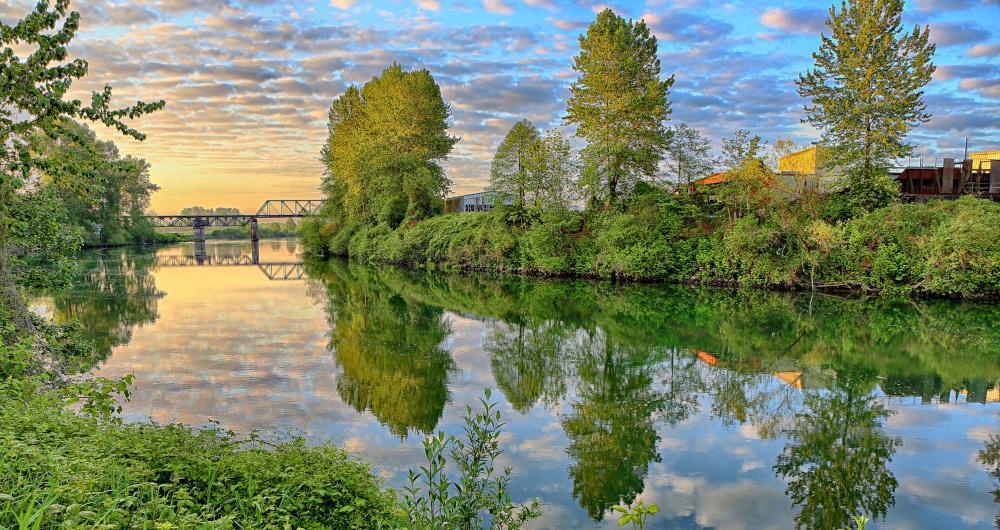
2. Snohomish - 40 minutes from Seattle
If you’re looking for a small town that delivers classic Pacific Northwest charm, Snohomish is one of my favorite places to visit in Washington State. May turned out to be a picture-perfect time to visit this town because I especially enjoyed sunshine and fields of tulips (like in my photo!). After our short drive from Seattle, we checked into a cozy affordable vacation rental for a relaxing week-long stay.
To start the day, we had great pancakes for breakfast at Maltby Cafe, then walked along First Street, popping into vintage boutiques.
Afterwards, we enjoyed the outdoors at the Centennial Trail and Lord Hill Regional Park, visited the Snohomish Aquatic Center with my son, and had fun at The Reptile Zoo.
The historic downtown felt alive with strollers and shoppers browsing antiques, especially on weekends. I thought that Snohomish was one of the best places to visit in WA when we were based in Seattle because I loved its nature and small time vibes.
To get to Snohomish, I suggest driving from Seattle, which takes about 45–60 minutes depending on traffic. Parking is generally easy to find near First Street, especially earlier in the day. There are also bus options available, but I prefer driving since it gives you more flexibility to explore nearby areas and scenic backroads at your own pace.
If you make the trip to Snohomish, I think you should definitely spend time walking Historic Downtown Snohomish along First Street. The area is known for its antique shops, local boutiques, and cozy cafés, and it’s one of the most charming main streets in Washington. You’ll also want to stroll along the Snohomish River waterfront, which is a peaceful spot to take photos, watch boats pass by, or just enjoy the slower pace.
There are plenty of places to stop for local eats, whether you’re in the mood for brunch, baked goods, or a casual lunch. You can also check out nearby farms, visit seasonal markets, or grab a coffee and enjoy it outdoors while people-watching downtown.
I will say that Snohomish is best enjoyed without a strict plan. It’s easy to wander into antique stores, strike up conversations with shop owners, and lose track of time—which is part of the appeal. On our first visit, we focused on downtown and the riverfront, which helped us get a feel for the area without trying to do too much.
If you’re interested in learning more about the town, there are local history walks and small guided tours that dive into Snohomish’s past as one of Washington’s oldest settlements. These are a great way to appreciate the historic buildings and hear stories you’d otherwise miss, especially if you’re visiting for the first time.
What I Loved Best:
Visiting the Historic Downtown Spring Market was my favorite highlight where flower baskets lined every storefront in the spring which was my personal highlight.
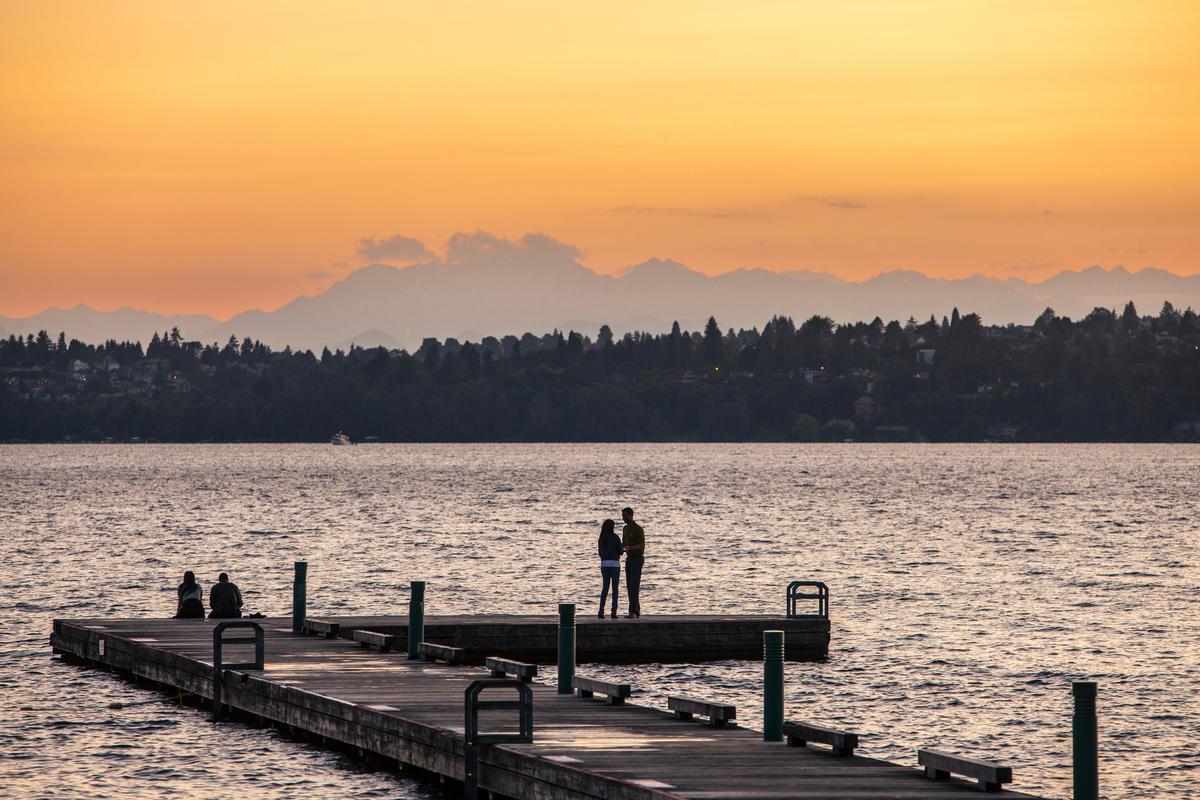
3. Kirkland - just 20 minutes from Seattle
I love visiting this town that makes such a cool and easy day trip from Seattle, one of my favorites! Besides, I think it's one of the best places to visit in WA overall. Why? First off, it sits along the eastern shore of Lake Washington so it's incredibly scenic. Secondly, I adore the walkable streets, parks right to the water’s edge, and a strong local arts scene. I love discovering a new café with views across the water to Seattle’s skyline.
I love how Kirkland delivers that perfect balance of vibrant city energy and relaxed lakeside magic, making it an amazing weekend getaway for both romantic escapes and joyful family trips.
We always start our experience downtown, where waterfront parks, public art, and cozy cafés create one of the coolest and most walkable areas near the Eastside.
I find Marina Park to be an absolute best spot, with spectacular lake views, sailboats drifting by, and sunsets that feel like a dream you’d swear were edited in my photos.
What makes Kirkland unique to me is how affordable and approachable it feels compared to nearby Seattle, yet it still offers exceptional dining, wine bars, and hidden local favorites.
In fact, for foodies, there are so many excellent choices. Start your morning at Kirkland Bakery, and have lunch at Ba Sa Restaurant for Vietnamese cuisine or grab a delicious (and affordable!) sandwich at Nick's Grill
We’ve had some of our most exciting afternoons biking the Cross Kirkland Corridor, an unusual and interesting trail that connects neighborhoods while keeping you close to nature.
I’m a big fan of the waterfront dining scene here, where the best meals come with front-row views of Lake Washington and a laid-back, romantic atmosphere.
Kirkland also shines as a brilliant idea for families, with beaches, playgrounds, and parks that make outdoor time feel easy, safe, and genuinely joyful.
I always tell friends that this lakeside city near Bellevue is one of Washington’s most underrated destinations, offering calm beauty without sacrificing culture or style.
- Location: Western Washington on the eastern shore of Lake Washington, northeast of Seattle in the Puget Sound region
- Map & Directions
What I loved best:
Dinner at Rimini Restaurant serving fancier Italian food was a standout - my husband and I celebrated our anniversary here!
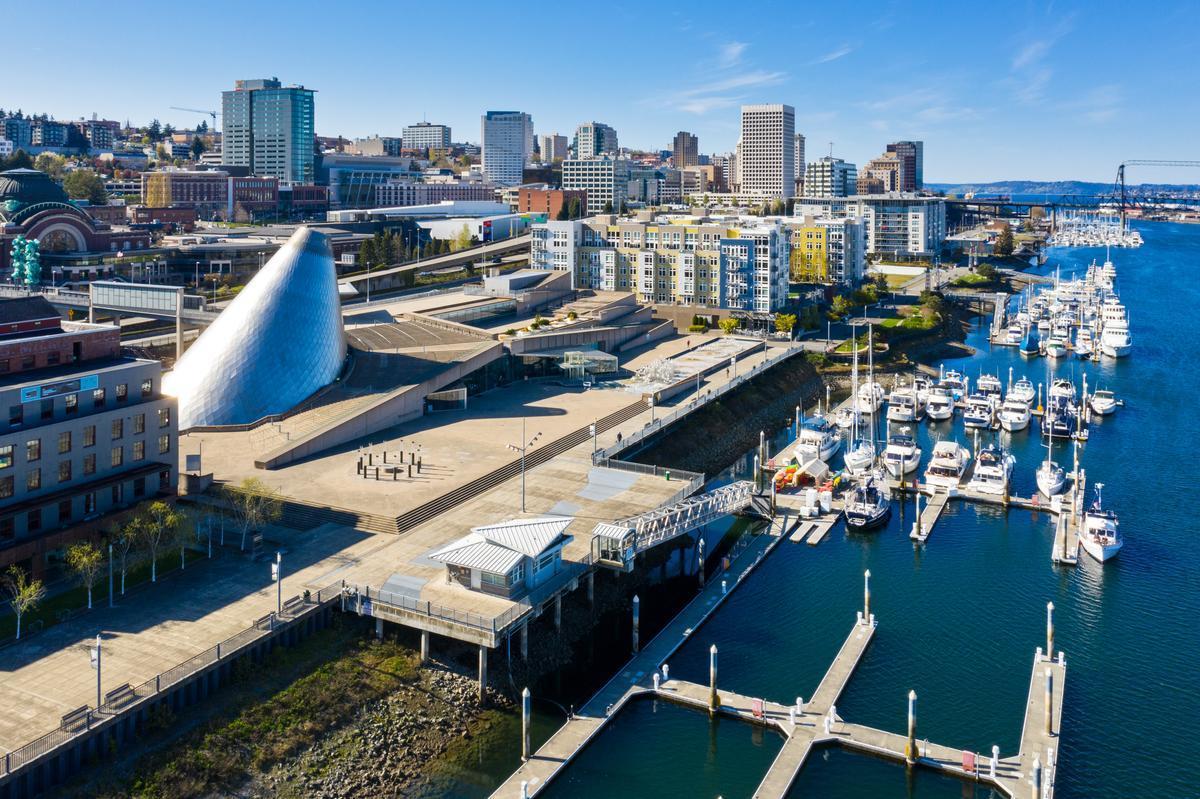
4. Long Weekend in Tacoma - 40 minutes from Seattle
This is my favorite place to visit in Washington State on a day trip (or weekend getaway when we have time!) for foodies (besides Seattle itself of course)! I loved starting my day at Curran Coffee near the waterfront. May turned out to be an incredible time to explore this Pacific Northwest gem when mild sunshine, rhododendrons in full bloom, and clear mountain views made Tacoma’s waterfront shimmer without the summer crowds.
I drove 30 minutes south from Seattle and spent three days over the weekend at the elegant McMenamins Elks Temple Hotel, exploring the city’s creative pulse — from the Museum of Glass and Tacoma Art Museum to the fascinating Washington State History Museum (my son loved the model trains!).
- Location: Western Washington along the shores of Puget Sound, south of Seattle near Mount Rainier
- Map & Directions
What I loved best:
In the afternoon, I loved wandering along Ruston Way, and watching kayakers (and seals!) in Commencement Bay.
Dinner at Duke’s Seafood right over the water was a standout - I thought their Chowder Samplers were fantastic!
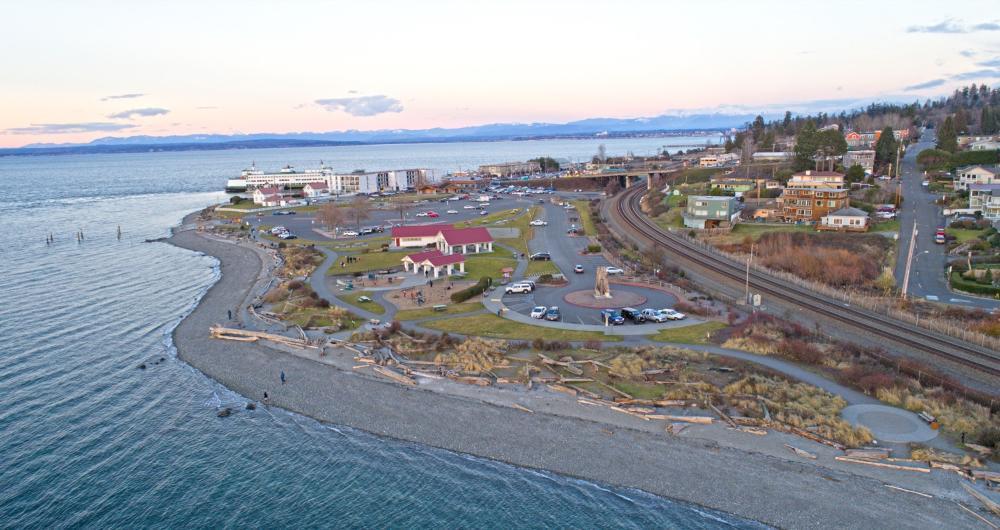
5. Mukilteo - 35 minutes from Seattle
I think that this is one of the best places to visit in Washington if you live in Seattle because it's just a 35 minute drive, and offers lots to do (and eat!).
Locals told me that Mukilteo Lighthouse (in the photo) has guided ships since the 1900s. I loved our visit to the historic Mukilteo Lighthouse Park for beach walks, watching the Whidbey Island ferry come and go, enjoying fresh seafood at Ivar’s Mukilteo Landing right on the water, exploring the nearby Japanese Gulch Trail to work off the calories.
- Location: Western Washington on the Puget Sound, northwest of Everett near the Whidbey Island ferry terminal
- Map & Directions
What I loved best:
My favorite thing to do is relaxing with coffee from Red Cup Cafe along the waterfront, soaking up the harbor atmosphere.
Best Places to Visit in WA in 1 to 2 Hours from Seattle
For me, these Washington State destination around one-to-two hours from Seattle are ideal for a quick weekend getaway when I'm up for some driving.
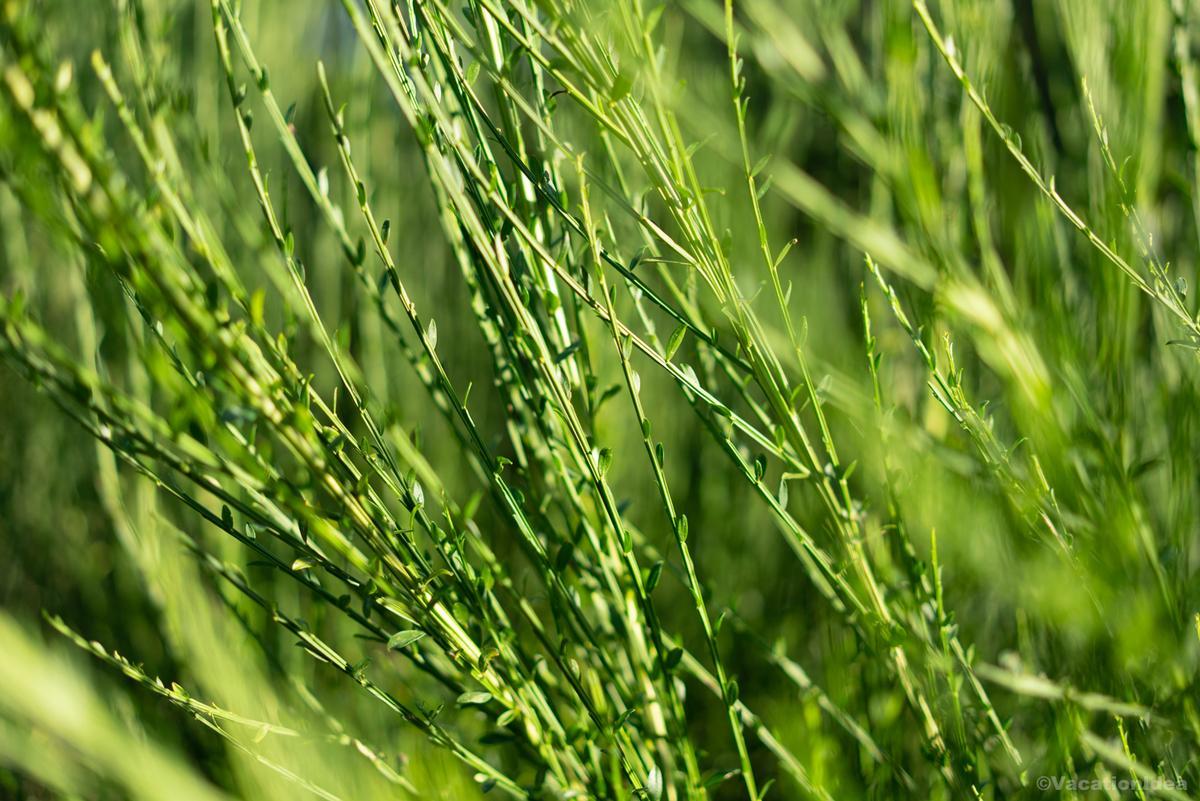
6. Things to Do in Bellingham, WA - 1 hour 30 minutes from Seattle
I was completely spellbound by this cozy and quietly romantic coastal city just one hour and 30 minute from Seattle. I was charmed by the Victorian brick storefronts, waterfront bakeries and mountain silhouettes in the distance.
I timed my visit for the Mount Baker Ski Area’s peak powder season, when fresh snowfall blanketed the slopes. In addition, the annual Bellingham SeaFeast Winter Edition (Free admissioN) brought coastal food and craft brews to town.
Between ski sessions, I wandered through Fairhaven’s independent bookstores, and warmed up with a latte at Camber Coffee Flagship cafe Downtown.
- Location: Northwestern Washington between Bellingham Bay and the Cascade foothills, near the Canadian border
- Map & Directions
What I loved best:
For me, Bellingham is one of the best places to visit in Washington State! It's full of unique attractions, perfect for a reset from the daily grind, and I hope you will enjoy it too.
Staying at the 4-star Chrysalis Inn & Spa, overlooking Bellingham Bay was my personal highlight. I loved soaking in the outdoor hot tub while watching the sunset over the San Juan Islands.
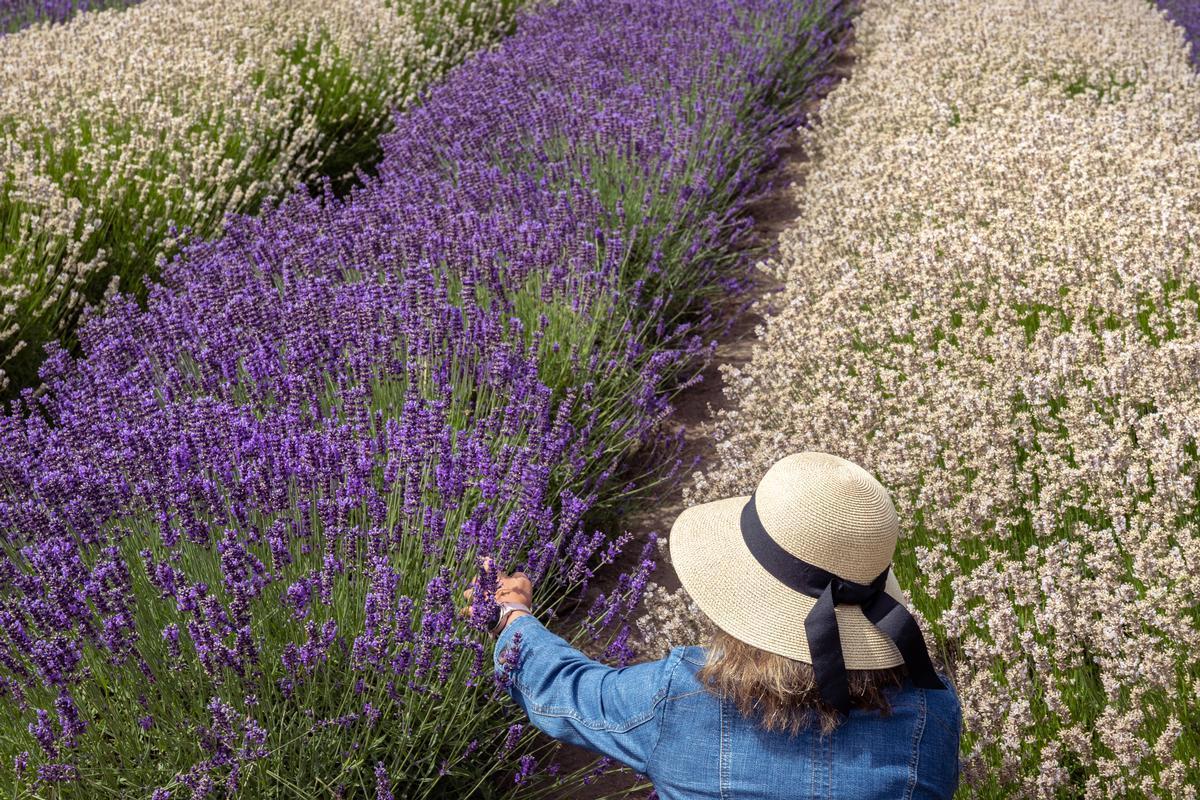
7. Sequim, WA - 2 hours northwest from Seattle
Spread out across open farmland and backed by the Olympic Mountains, to me, Sequim feels like one of Washington’s most peaceful and unspoiled pockets! It was so peaceful that it was easy to feel at home right away when we moved to the West Coast. I’m struck by how calm everything feels—soft breezes blowing across the plains, eagles circling overhead, and quiet backroads leading to West Coast beaches that are blissfully uncrowded.
We enjoy walking through the famous lavender fields in the summer, and spend time at the Dungeness Spit, where I can walk along one of the longest natural sand spits in the world.
In addition, I like exploring downtown Sequim, where local shops and cafés have such a welcoming atmosphere.
- Location: Northern Olympic Peninsula in western Washington, along the Strait of Juan de Fuca east of Port Angeles
- Map & Directions
What I loved best:
I never leave without savoring fresh Dungeness crab, my personal highlight.
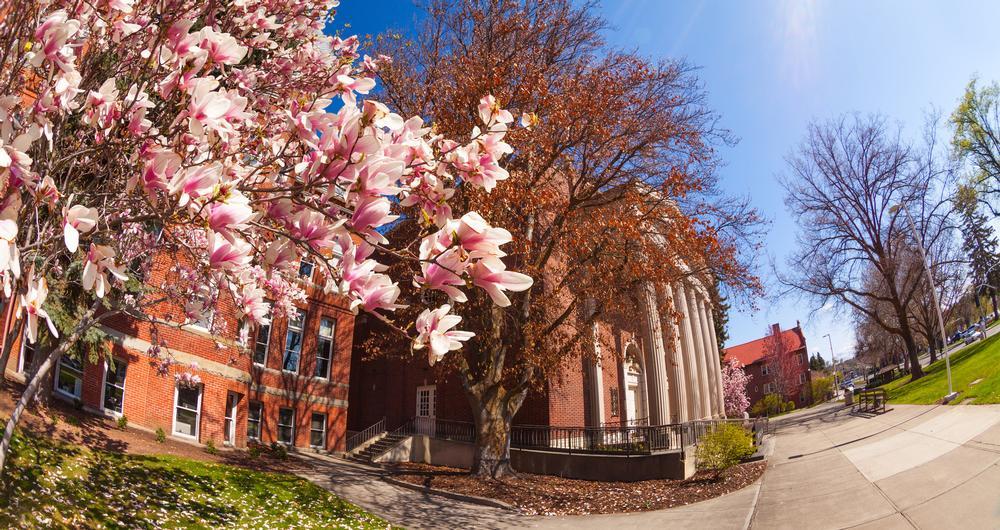
8. Ellensburg, WA - 2 hours from Seattle
Ready for a trip that mixes small-town charm with wide-open mountain views? Set in the Kittitas Valley, I completely fell for Ellensburg's mix of frontier history, farmland views, and youthful energy from Central Washington University.
After a scenic one hour 45 minute drive from our apartment in Seattle, we stayed at the Hotel Windrow ($185) for two eventful days, where I enjoyed our boutique-style guest room with modern amenities and rustic touches.
We loved having so much to see and do on on vacation! I loved exploring downtown, visiting the Clymer Museum of Art, enjoying the Ellensburg Farmers Market (during the warmer season), visiting the Kittitas County Historical Museum, touring the Wild Horse Renewable Energy Center, and enjoying the outdoors at places like Olmstead Place State Park or Irene Rinehart Riverfront Park.
- Location: Central Washington in the Kittitas Valley, along the Yakima River north of Yakima
- Map & Directions
What I loved best:
Dinner at The Pearl Bar & Grill with my son and husband in a relaxed setting with burgers and fries was my personal highlight.
Best Places to Visit in WA in 2 - 3 Hours from Seattle
I like to visit these Washington State destination around two-to-three hours from Seattle on a 3-day weekend or longer which leads to a perfect combination of scenic driving and having time to relax once we arrive.
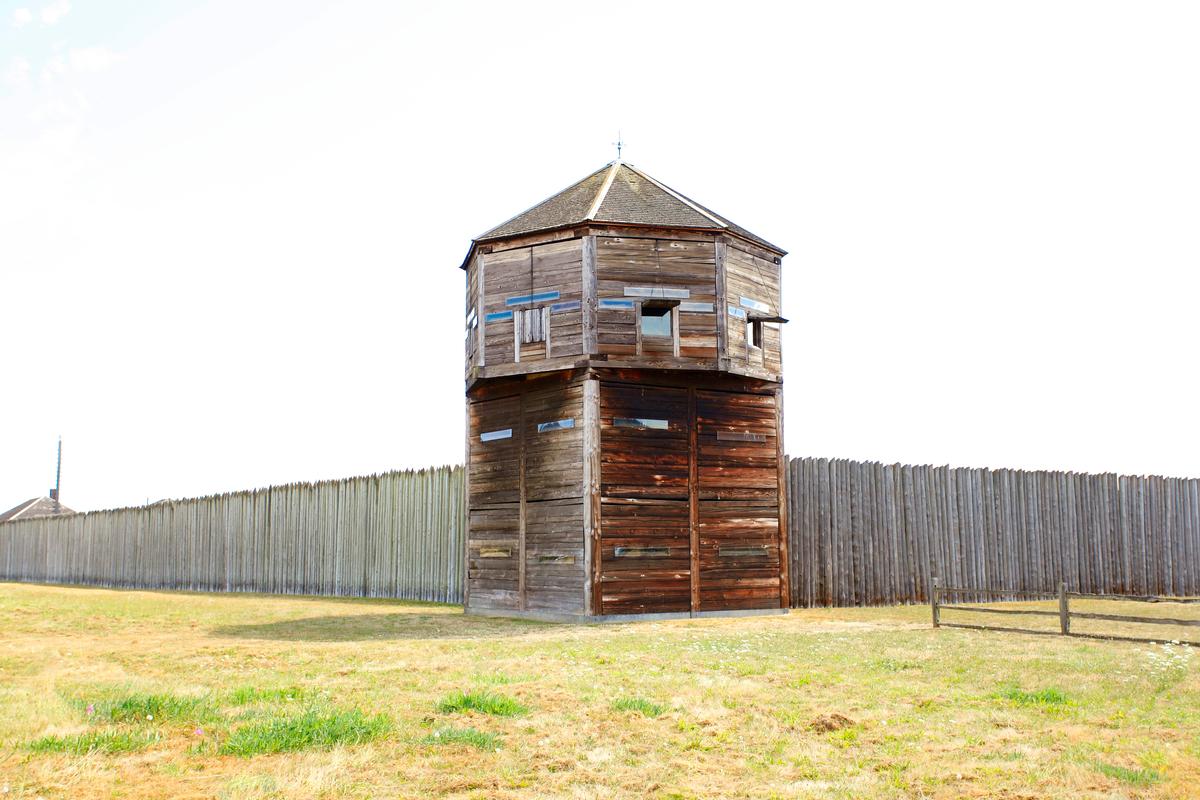
9. Vancouver, WA - 2 hours 35 minutes from Seattle
Ending November in this cozy Washington town turned out to be the best decision. Why? The crisp Columbia River air felt refreshing, the riverfront was calm, and the local shops were starting to roll out their holiday décor. In addition, off-season hotel rates made it easy to snag a comfortable and affordable romantic last-minute weekend stay.
We drove just a short distance from Portland for a relaxed four-day break at a well-priced Airbnb. I spent my mornings strolling in parks and along river pathways which were blissfully uncrowded, visiting Fort Vancouver National Historic Site.
In addition, we had access to some of the best food in Downtown Vancouver. There is a lot of choose from (and I mean A LOT!). I really enjoyed Botanist in the Fairmont for a romantic dinner with a view, Nightingale if you want to try some truly Canadian food, and Chambar for Belgian cuisine.
- Location: Southwestern Washington along the Columbia River, north of Portland, Oregon
- Map & Directions
What I loved best:
To work off the calories, I enjoyed strolling in Esther Short Park, where we admired the oldest public square in Washington (my personal highlight!)
A downside? I should probably mention that November weather here can swing from sunbreaks to steady drizzle, so I was glad I packed layers and waterproof shoes!

10. Port Angeles - 2 hours 45 minutes from Seattle plus a short ferry ride
This place has this incredible “hidden gem” feeling, especially if you love West Coast destinations framed by dramatic scenery.
If your travel dates are flexible, I recommend visiting this coastal spot in July. We thought the weather was perfect for ferry-hopping, beachcombing, and ending days with Pacific Northwest cuisine. I loved the lively summer energy, with the Fourth of July celebration lighting up the Port Angeles waterfront, open-air concerts at the pier, and cool arts festivals downtown.
From our apartment in Seattle, we northwest to spend a blissful week in Port Angeles - you may know it as a gateway to Olympic National Park. We stayed at the historic Red Lion Hotel on the waterfront ($175/night) overlooking the ferry terminal.
What truly won me over was how effortlessly we could escape into nature. One morning we drove up to Hurricane Ridge, where sweeping alpine views made us feel tiny and exhilarated all at once. Standing together above the clouds, wrapped in jackets against the crisp mountain air, felt incredibly grounding.
During our stay we swam and kayaked at nearby Lake Crescent, visited the Olympic National Park Visitor Center in Port Angeles, and indulged in local flavors at wineries and waterfront cafés. In addition, my son loved the Feiro Marine Life Center where he had a chance to learn about local sea life.
One of my favorite stops was the Peninsula Taproom, where I sampled craft brews alongside local oysters, and later, a sunset dinner at Bella Italia. Another great spot for dinner was Kokopelli Grill.
- Location: Northern Olympic Peninsula in northwestern Washington, along the Strait of Juan de Fuca near Olympic National Park
- Map & Directions
What I loved best:
My favorite highlight was strolling along the Port Angeles Waterfront Trail, watching ferries drift across to Victoria, and browsing the nostalgic downtown filled with vintage shops.
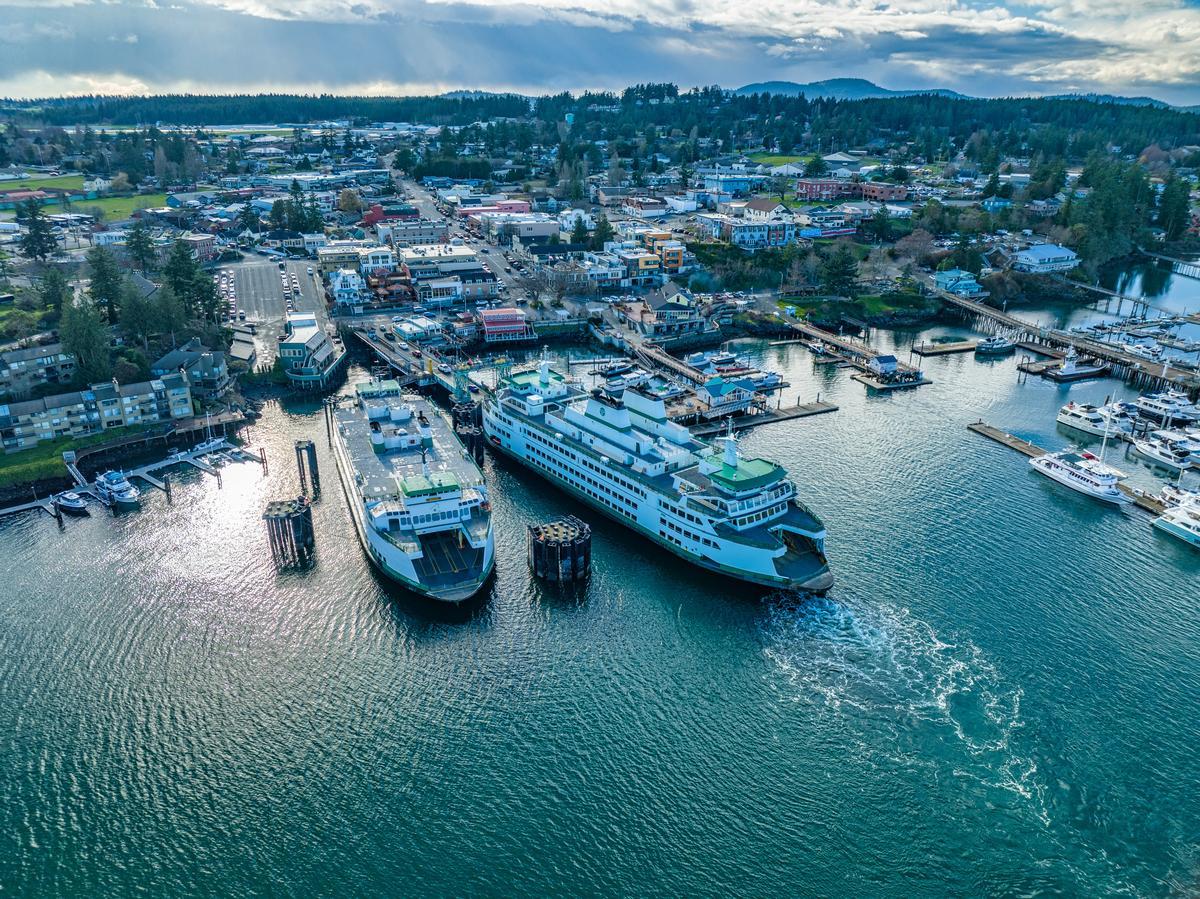
11. Friday Harbor - 3 hours from Seattle (including ferry ride)
I was completely spellbound by this tranquil and romantic Pacific Northwest island town which felt like stepping into a postcard. We admired orcas swimming offshore (you can catch them mid-May to mid-September). In fact, I thought Maya’s Legacy Whale Watching was the most magical experience that reminded me of my time living in Hawaii where we saw whales all the time too.
From Seattle, we drove about 1 hour 45 minutes north (90 miles via I-5) to Anacortes, then boarded the Washington State Ferry (1 hour, $15 walk-on or around $25 per car + driver) across the Salish Sea to Friday Harbor, the main town on San Juan Island (population just around 2,400 people).
While there, I wandered around the compact, walkable downtown filled with galleries, shops, and cafés, then visited the San Juan Historical Museum ($10 admission) to learn about the island’s pioneer past. We stayed at the historic Friday Harbor House ($295) for two days, where I especially loved the sunset views of the ferries gliding in.
- Location: On San Juan Island in northwestern Washington, in the Salish Sea north of Seattle
- Map & Directions
What I loved best:
Seeing whales from Lime Kiln Point State Park (known as one of the best land-based whale-watching spots in the world) was a true highlight for me!
Best Places to Visit in WA in Over 3 Hours from Seattle
For me personally, when it comes to driving more than 3 hours, I like these destinations as a part of a larger Washington road trip, or we fly to an airport nearby when we visit.
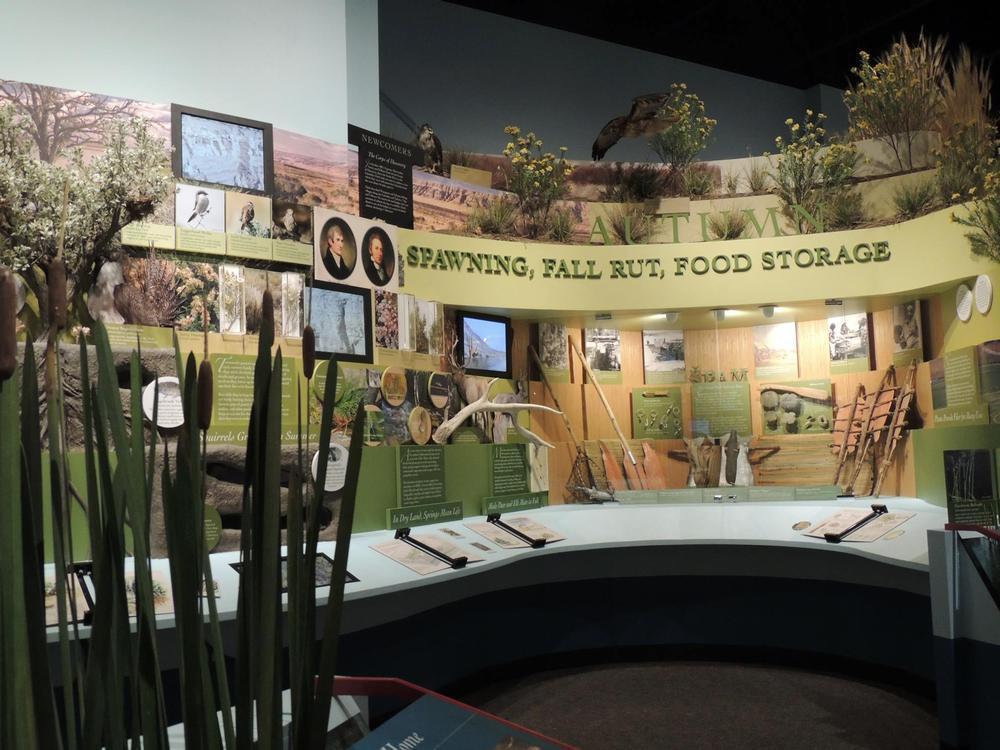
12. The REACH Museum in Richland, WA - 3 hours 15 minutes from Seattle
I thought this was a fascinating stop and one of the best things to do in Washington. Why? First off, it sits along the Columbia River so it's incredibly scenic. Secondly, it’s one of those places where nature, science, history, and local culture all intersect in meaningful ways.
We visited on a fun weekend trip from Seattle (about 3.5 hours by car one way), parked in its LEED-certified facility, and wandered through both indoor exhibits and outdoor gardens. For me, exploring The REACH felt like stepping through time, from geological upheavals to wartime innovations, then into modern environmental challenges. we spent around 3 hours at this cool museum, walking through the exhibits and also enjoying the outdoors by looking at river vistas and enjoying the walking paths on a beautiful sunny day.
- Location: Southeastern Washington in the Tri-Cities region, along the Columbia River in Richland
- Map & Directions
What I loved best:
Instead of driving back right away, we checked into 3-star Holiday Inn Richland on the River overnight (around $111). In the morning, we started with breakfast at Yellow Cafe where I had amazing strawberry pancakes, my personal higlight. Afterwards, we explored Howard Amon Park and Badger Mountain Centennial Preserve before driving home to Seattle.

13. Walla Walla - 4 hours from Seattle
Ready for a relaxing trip surrounded by vineyards and sunny skies? I found this place absolutely enchanting this month with its historic downtown, lined with beautifully preserved 19th-century brick buildings.
A scenic 4-hour drive from Seattle brought me to the heart of town where I spent my afternoon wandering among the boutique shops on Main Street, sampling award-winning local vintages at Seven Hills Winery, and pausing often to admire the stunning mountain views that peek between historic storefronts.
Dinner at Saffron Mediterranean Kitchen was fresh, inventive, and delightfully unpretentious. I stayed two nights at the elegant 3-star Marcus Whitman Hotel ($195), a 1928 landmark whose grand lobby and old-world charm made me feel like I’d stepped into a classic travel novel (right downtown close to everything!).
The town itself felt intimate and inviting, with tree-lined streets, brick buildings, and tasting rooms just steps apart. We spent leisurely afternoons wandering downtown, ducking into small boutiques and cozy cafés, never feeling rushed, always finding another place worth lingering.
One of my favorite moments was driving through the surrounding vineyards, where rolling hills stretched endlessly under wide-open skies. The scenery felt peaceful and grounding, especially in the late afternoon when the light softened and everything turned warm and golden.
We loved how close nature felt, with the Blue Mountains rising in the distance and quiet country roads perfect for long, unhurried drives. Evenings were especially memorable—dinners at intimate restaurants, soft conversation over incredible local food, and walks back under star-filled skies that felt impossibly clear.
What struck me most about Walla Walla was how effortlessly romantic it felt. Nothing was loud or flashy—it was the kind of place that invites you to slow down, reconnect, and savor every small moment.
- Location: Southeastern Washington in the Walla Walla Valley, near the Oregon border
- Map & Directions
What I loved best:
My personal highlight was our walk through the Whitman College campus, known for its art and landscaping which my son really enjoyed.
A downside? Prices for boutique hotels and fine dining are a touch higher in Walla Walla than average for small towns in Washington, but I thought the atmosphere, scenery, and culinary scene make it well worth it.
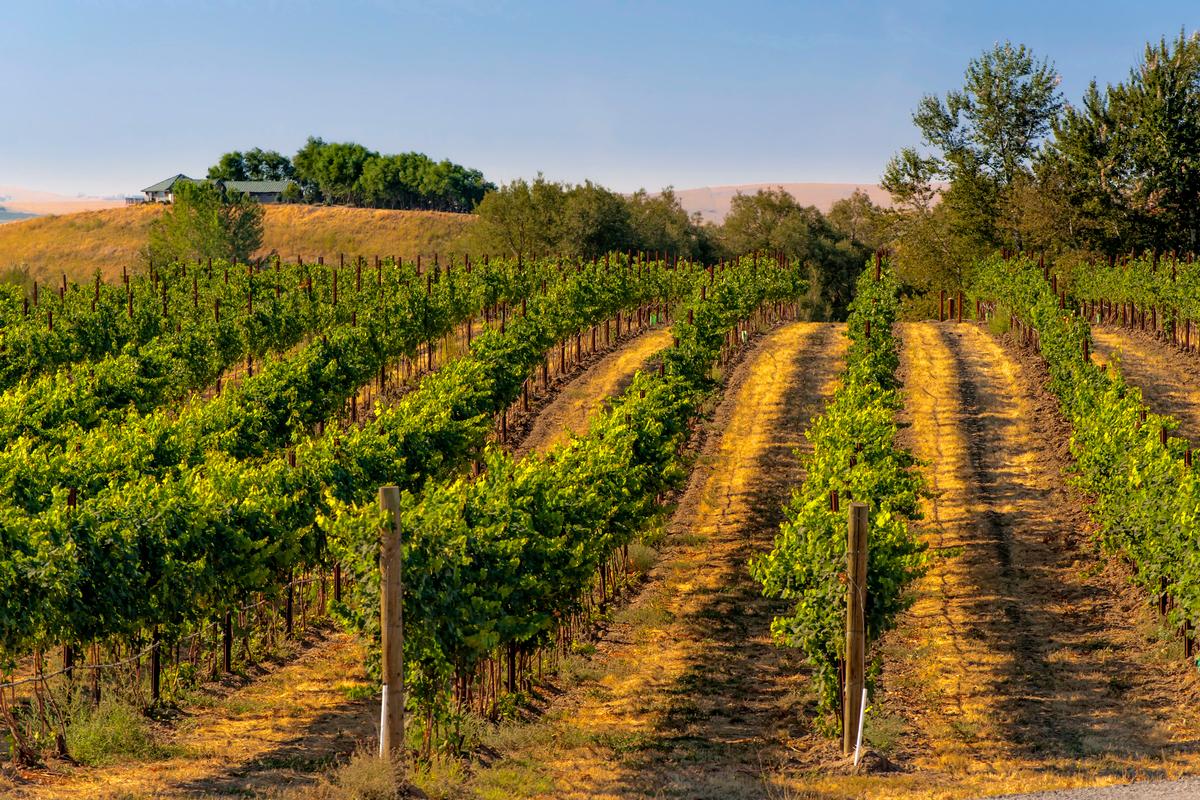
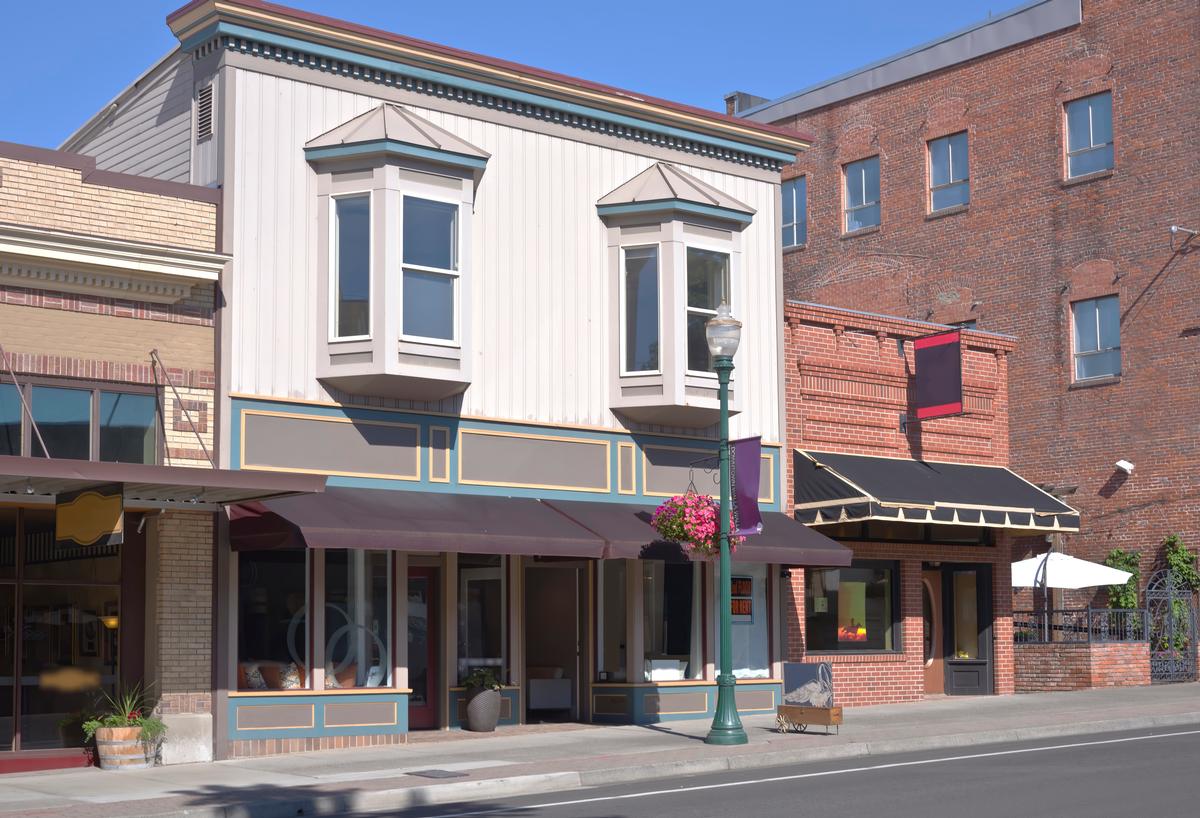
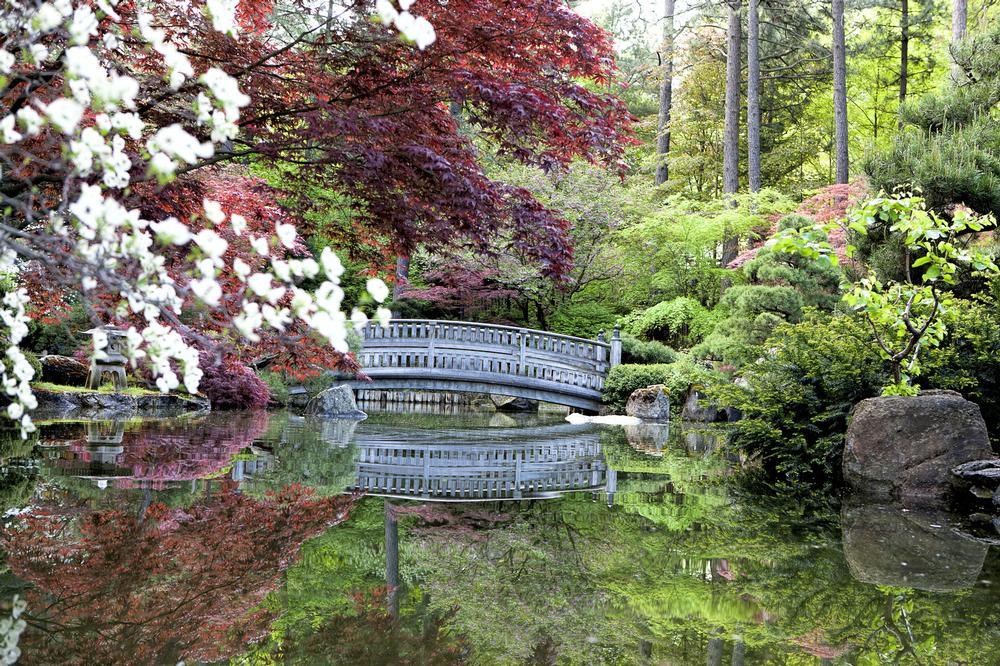
14. Things to Do in Spokane - 4 hours 15 minutes from Seattle
This city, tucked into the eastern edge of Washington, is one of my favorite destinations when I'm in the mood for culture and nature in a single weekend! I adored this town’s blend of historic brick buildings, leafy parks, and creative energy when Chris and I visited for a fun long weekend this month!
After landing at Spokane International Airport (GEG), I based myself at the 4-star Davenport Grand (around $137/night) for four exciting days, where we spent my mornings walking across the Monroe Street Bridge, pausing to watch the waterfalls thunder below. In the afternoons, I browsed indie shops and galleries in the West End District in "The Lilac City", then lingered over late lunch on the patio at Wild Sage Bistro, where I ordered salmon.
I planned my trip for the Lilac Festival & Armed Forces Torchlight Parade so that we could enjoy the blooms and marching bands. We also caught Lilac Bloomsday Run, the annual community run (a tradition since the 1970s!) that brings everyone outdoors to celebrate the season.
- Location: Eastern Washington along the Spokane River, near the Idaho border on the Columbia Plateau
- Map & Directions
What I Loved Best:
I loved our lunch at Clinkerdagger was my favorite highlight, where we dined overlooking the Spokane River, with skyline views & deck.
Booking Checklist
1. Book Your Flight - I use Expedia because I like their mobile app with my itinerary. They've helped me re-book flights on many occasions. Once you reach their Gold tier, support is especially good.
2. Book Your Hotel - I use Booking.com or Expedia, depending on my destination.
3. Book Your Rental Car - I use Expedia.
4. Book your tours on Viator or Get Your Guide.
5. If you are planning to visit more than three national parks in the next 12 months, buy the America the Beautiful Pass.
